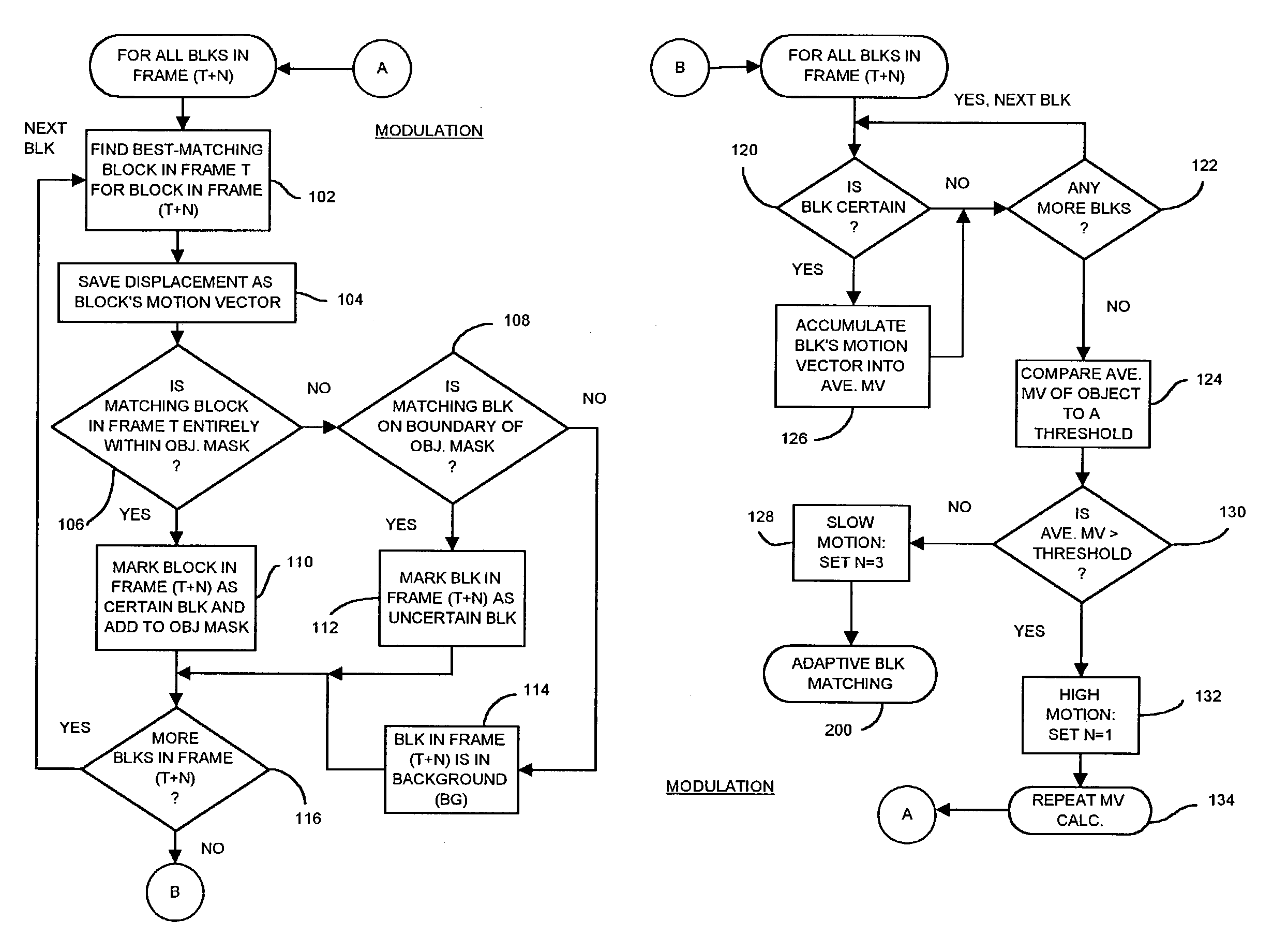Occlusion/disocclusion detection using K-means clustering near object boundary with comparison of average motion of clusters to object and background motions
a technology of occlusion/disocclusion detection and clustering, applied in the field of image processing, can solve the problems of background blocks lacking differentiating features, errors in background motion vectors, and more complex operations performed on images
- Summary
- Abstract
- Description
- Claims
- Application Information
AI Technical Summary
Benefits of technology
Problems solved by technology
Method used
Image
Examples
Embodiment Construction
[0047]The present invention relates to an improvement in object tracking with occlusion and disocclusion. The following description is presented to enable one of ordinary skill in the art to make and use the invention as provided in the context of a particular application and its requirements. Various modifications to the preferred embodiment will be apparent to those with skill in the art, and the general principles defined herein may be applied to other embodiments. Therefore, the present invention is not intended to be limited to the particular embodiments shown and described, but is to be accorded the widest scope consistent with the principles and novel features herein disclosed.
Overall Flow—FIG. 4
[0048]FIG. 4 is a simplified flowchart highlighting modulation of adaptive-block object tracking with occlusion and disocclusion processing. The object-tracking method is a block-based tracking method that uses macroblocks and motion vectors such as are used in MPEG compression. Macro...
PUM
 Login to View More
Login to View More Abstract
Description
Claims
Application Information
 Login to View More
Login to View More - R&D
- Intellectual Property
- Life Sciences
- Materials
- Tech Scout
- Unparalleled Data Quality
- Higher Quality Content
- 60% Fewer Hallucinations
Browse by: Latest US Patents, China's latest patents, Technical Efficacy Thesaurus, Application Domain, Technology Topic, Popular Technical Reports.
© 2025 PatSnap. All rights reserved.Legal|Privacy policy|Modern Slavery Act Transparency Statement|Sitemap|About US| Contact US: help@patsnap.com



